Niles’ Weekly Register, a newspaper rich in history…
May 12, 2014 by TimHughes · 2 Comments
This post is taken almost entirely from the work by Bill Earle at www.nilesregister.com, whose database of the entire run of this notable newspaper provides a very inclusive perspective of life not only in America but the world for much of the first half of the 19th century. But this post offers insight beyond the Niles’ Register. It provides a perspective of the broader scope of newspaper publishing from this significant era.
 The national and international newsweekly Niles’ Register is well known today primarily to collectors & those and genealogists who have sampled its treasures. But in the first half of the 19th century, the Register was as well known as the New York Times and Washington Post are known today. From 1811 to 1849, it was the principal window through which many Americans looked out on their country and the world. The scope of the work was immense, its circulation was large (the largest in the United States, by some accounts), and its influence was reflected in generous compliments from such readers of the publication as John Adams, Thomas Jefferson, and Andrew Jackson.
The national and international newsweekly Niles’ Register is well known today primarily to collectors & those and genealogists who have sampled its treasures. But in the first half of the 19th century, the Register was as well known as the New York Times and Washington Post are known today. From 1811 to 1849, it was the principal window through which many Americans looked out on their country and the world. The scope of the work was immense, its circulation was large (the largest in the United States, by some accounts), and its influence was reflected in generous compliments from such readers of the publication as John Adams, Thomas Jefferson, and Andrew Jackson.
The Register was founded by Hezekiah Niles in Baltimore in 1811. A printer and journalist of Quaker background from the Wilmington-Brandywine-Philadelphia area, Niles had worked in Philadelphia and Wilmington before moving to Baltimore in 1805 as editor of the “Baltimore Evening Post”. When that paper was sold in 1811, he launched his “The Weekly Register“. The editor had large ambitions: he intended to be “an honest chronicler” who “registered” events not just for his contemporaries but for posterity as well. Although politics would be covered extensively, the Register would eschew any partisan slant — “electioneering,” as the editor called it. Furthermore, the paper would ignore local news in favor of national and international news. The paper would cost $5 per year, a premium price in an era when a dollar might constitute a generous day’s wages.
Niles had secured some subscribers before his first issue appeared on September 7, 1811, but those initial subscribers would be able to cancel after 13 weeks if the work did not meet their expectations. After six months, however, Niles was able to boast that few initial subscribers had withdrawn. Furthermore, so many new subscribers had signed on that the editor had had to produce three printings of some early issues to supply those who wanted complete sets of the new publication. Niles would never get rich producing the Register–his published complaints about slow subscription payments are a recurring theme throughout his career–but the paper was clearly well established almost from the outset.
The value that subscribers saw in the publication is easy to understand. It was exceptionally dense with material: there was no advertising, and only a handful of illustrations ever appeared (desired issues by collectors); consequently, the pages were packed with text. Furthermore, Niles frequently added extra value to the basic publication. He would occasionally reduce the type size if momentous events left him with important material that he needed to “get in,” or he would extend the regular 16-page length of the paper by adding extra pages. On a number of occasions, special supplemental volumes on topics of particular interest — occasionally amounting to hundreds of pages — were sent gratis to subscribers. One such supplement carried a very early printing of the Star Spangled Banner.
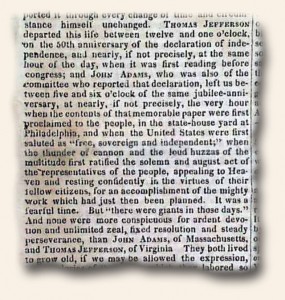 In addition to the sheer volume of material, there were two other outstanding aspects of the Register which distinguished it. First was its scope. While The Register emphasized political, commercial, agricultural, and industrial news, and paid only limited attention to cultural or social issues, it reported on events worldwide. Foreign coverage was more abbreviated than domestic reporting, but major events abroad were routinely summarized. Furthermore, Niles drew both domestic and foreign news from a host of sources — his own reporting and extensive correspondence, foreign newspapers and domestic “exchange papers,” commercial correspondence received in the major international port of Baltimore, and private correspondence passed on to him by friends and acquaintances. Finally, he emphasized “getting in” texts of major documents — texts of treaties, laws, and court decisions, transcripts of speeches, official reports, and records of Congressional proceedings (perhaps a quarter of the 30,000 pages that the Register eventually contained were given over to proceedings in Congress). Collectors love that Niles included within its pages the declaration of War for the War of 1812, the constitutions of many states as they entered the Union, inaugural addresses of Presidents of the era as well as their annual state-of-the-union addresses, the Monroe Doctrine, and virtually every other national document of note. For any significant national event “Niles Register” can be counted on to provide a detailed account.
In addition to the sheer volume of material, there were two other outstanding aspects of the Register which distinguished it. First was its scope. While The Register emphasized political, commercial, agricultural, and industrial news, and paid only limited attention to cultural or social issues, it reported on events worldwide. Foreign coverage was more abbreviated than domestic reporting, but major events abroad were routinely summarized. Furthermore, Niles drew both domestic and foreign news from a host of sources — his own reporting and extensive correspondence, foreign newspapers and domestic “exchange papers,” commercial correspondence received in the major international port of Baltimore, and private correspondence passed on to him by friends and acquaintances. Finally, he emphasized “getting in” texts of major documents — texts of treaties, laws, and court decisions, transcripts of speeches, official reports, and records of Congressional proceedings (perhaps a quarter of the 30,000 pages that the Register eventually contained were given over to proceedings in Congress). Collectors love that Niles included within its pages the declaration of War for the War of 1812, the constitutions of many states as they entered the Union, inaugural addresses of Presidents of the era as well as their annual state-of-the-union addresses, the Monroe Doctrine, and virtually every other national document of note. For any significant national event “Niles Register” can be counted on to provide a detailed account.
Second was its even handedness. Niles’ pledge in the first issue of The Register to avoid party politics distinguished the paper from much of the American journalism of the era. Many newspapers in that day represented parties, or factions within parties, or even particular candidates, and political reportage was usually one-sided and strident. The Register, however, ignored the petty disputes between “the ins and the outs.” As a result, there is a balanced quality to the Register that gave it an authority no other publication of its time could match.
One other great advantage favored the Register: the richness of events in the era. The Napoleonic Wars were still going on when the Register first appeared, and its pages were soon thereafter crowded with the events of the War of 1812, reporting in fine detail all major battles both on land & the sea. The Texas war for independence including a nice account of the Battle of the Alamo can be found within its pages. Indian wars and foreign revolutions erupted periodically, and the war between Mexico and the United States occurred late in the period. Domestic debates about major national issues–the tariff, public land policy, slavery, internal improvements–continued ceaselessly. Industrial and technological developments abounded (the steam engine, the building of the Erie Canal & other canals and railroads, introduction of the telegraph), and an ample cast of larger-than-life characters was readily available–Napoleon Bonaparte, Tsar Alexander, the Duke of Wellington, Queen Victoria, Andrew Jackson, Davy Crockett, Sam Houston, John C. Calhoun, and so many others. It was an accident of history that the Register had all these fascinating developments and personalities to cover, but Niles made the most of it.
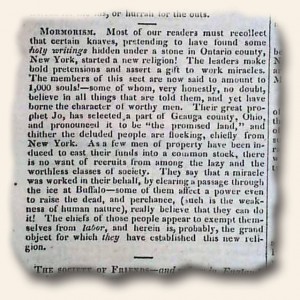 Hezekiah Niles’ editorship of the Register lasted 25 years. In 1836, advancing age and declining health obliged him to turn the paper over to his son, William Ogden Niles. William Niles had been raised as a printer/journalist, and was involved with other newspapers both before and after his term at the Register. His first editorial showed him to be his father’s son: he expressed himself determined to “maintain the well-earned reputation of the Register” and to “record facts and events without fear or favor, partiality or affection, — in brief, to preserve its national character.” However, he quickly showed that he had his own ideas, too. His first issue expanded the traditional format of the paper, he changed the paper’s name to “Niles’ National Register”, and he soon moved the paper to Washington, D,C., evidently hoping to extend the paper’s national political influence.
Hezekiah Niles’ editorship of the Register lasted 25 years. In 1836, advancing age and declining health obliged him to turn the paper over to his son, William Ogden Niles. William Niles had been raised as a printer/journalist, and was involved with other newspapers both before and after his term at the Register. His first editorial showed him to be his father’s son: he expressed himself determined to “maintain the well-earned reputation of the Register” and to “record facts and events without fear or favor, partiality or affection, — in brief, to preserve its national character.” However, he quickly showed that he had his own ideas, too. His first issue expanded the traditional format of the paper, he changed the paper’s name to “Niles’ National Register”, and he soon moved the paper to Washington, D,C., evidently hoping to extend the paper’s national political influence.
However, the move to Washington failed. The paper returned to Baltimore in 1839 and William Ogden’s tenure as editor ended that same year. During his editorship, legal title to The Register apparently remained with Hezekiah. When Hezekiah died in 1839, William Ogden’s step-mother, Hezekiah’s second wife, sold the property and William Ogden was out.
Jeremiah Hughes bought the franchise. A long-time resident of Annapolis (he was in his mid-fifties when he acquired the Register), Hughes was cut from the same cloth as his long-time friend, Hezekiah Niles. Both had served in the militia in the War of 1812. Most importantly, however, Hughes was a journalist, having been publisher of the Maryland Republican at Annapolis for many years. Thus, although the Whig partisanship of the Register increased notably during Hughes’ tenure, its essential news-reporting function was unimpaired.
Hughes’ editorship lasted until 1848 when business difficulties and declining health persuaded him that he could no longer publish The Register. It was suspended in March. The cause of the Register’s suspension is not clear. It may have resulted from nothing more than the ordinary ebb and flow of fortune in the publishing business. In a broader sense, however, the Register was clearly losing its special place in American journalism. The paper’s cachet had always been two-fold — its concise news summaries from around the United States and the world, and the relatively non-partisan tone of its political coverage — but the uniqueness of both these characteristics was being eroded by the late 1840s.
First, improved communications were making it easier for daily newspapers to offer the coverage from elsewhere that Hezekiah Niles had originally had to cull out of ship letters and exchange papers. By the 1840s, faster mail service via steamboats and railroads, as well as spreading telegraph lines, had deprived the Register of its exclusive franchise on this kind of reportage. Second, partisanship in American journalism was declining. By the 1840s, the newspaper business was established as an industry in its own right.
Rising literacy rates were giving the newspapers a growing market at the same time that improved printing processes were yielding a more affordable product to that market. The newly independent newspapers began to replace their former dependence on political ideology with a developing journalistic ideology, “objective” journalism, journalism without an obvious partisan slant. It is ironic that the Register missed this development in journalistic style. Hezekiah Niles had pioneered “objective” journalism–indeed, he is sometimes called its progenitor–but Jeremiah Hughes’ Register of the 1840s was much more clearly a partisan Whig publication than it had been in earlier years. Any partisan alliance would have hurt a paper such as Niles’ Register at a time when partisan journalism was waning, but an alliance with the divided and dying Whigs was particularly unfortunate.
Whatever caused the paper’s decline, it remained suspended until July, 1848. It then reappeared under the editorship of George Beatty from new headquarters in Philadelphia. Little is known about Beatty, but he apparently was a novice at publishing when the opportunity to acquire the Register arose. However, he made a serious effort to revive the franchise, and ran it for a year. But it was too little, too late. Beatty’s journalistic inexperience showed too clearly in the paper’s pages, and the Register’s place in the marketplace disappeared. The last regular issue appeared in June, 1849. Three abbreviated issues appeared in September, 1849, but they were the last.
In one sense, however, the publication never died. The full 38 years of the Register’s run is a common holding in libraries (either in paper or in 20th-century-produced microform), and bound volume commonly turn up in library deaccessionings. They are often found on booksellers shelves as well. Collectors relish the wealth of content while acknowledging its small size (some argue it was a magazine and not a newspaper) does not fit the expectation of a newspaper. But if any collector wished for a single-title collection of major events from 1811-1849, Niles’ Register would be the undisputed choice.
Consequently, it remains available for historians, genealogists, and certainly collectors of old newspapers. As one historian has said, “Probably no day passes without some researcher digging into the information supplied with so much care and responsibility by Hezekiah Niles.” The statement was made several decades ago — and Niles would be delighted to know it is still true.
Niles’ Weekly Register documented the first half of the 19th century…
June 14, 2013 by TimHughes · 2 Comments
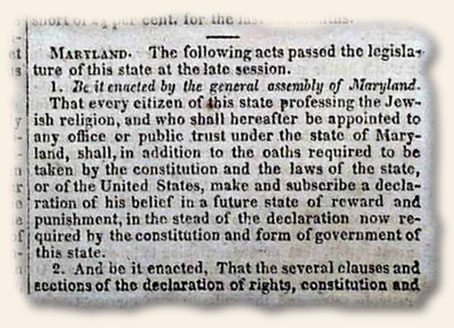 Of the many notable newspapers published in the history of the United States there are a few stand-outs for different eras. Of the colonial era the “Pennsylvania Gazette” came to prominence under the guidance of publisher Ben Franklin, and in the latter decades of the 1700’s the “Gazette of the United States“, and the “Columbian Centinel” were two of the more significant titles which informed the American populace for many years. Of the 19th century the “National Intelligencer” and the “New York Times” were certainly among the more prominent, but a title which did as much as any other to bring the news into the households of America was “Niles’ Weekly Register“.
Of the many notable newspapers published in the history of the United States there are a few stand-outs for different eras. Of the colonial era the “Pennsylvania Gazette” came to prominence under the guidance of publisher Ben Franklin, and in the latter decades of the 1700’s the “Gazette of the United States“, and the “Columbian Centinel” were two of the more significant titles which informed the American populace for many years. Of the 19th century the “National Intelligencer” and the “New York Times” were certainly among the more prominent, but a title which did as much as any other to bring the news into the households of America was “Niles’ Weekly Register“.
Considered by some a magazine due to its small size, I like to consider it a small newspaper, as its content was more aligned to presenting the politics & other news of the day rather than the literary content more associated with magazines. But of curious note is that it was devoid of advertising, relying entirely upon the strength of its subscription base for its existence.
Hezekiah Niles edited and published his newspaper in Baltimore from 1811 until 1836, making it into one of the most widely-circulated periodicals in the United States and himself into one of the most influential journalists of his day. Devoted primarily to politics, “Niles’ Weekly Register” is considered an important source for the history of the period. It continued beyond his demise until 1849.
Given its close proximity to the nation’s capital it was in an excellent position to print political reports but also the wealth of other news from all corners of the then-growing country which would eventually find its way to Washington, D.C. Having collected early newspapers for over 37 years I can attest to the quality of reporting–very in depth–in comparison to the physically larger newspapers of the day.
Founded just a year before the outbreak of the War of 1812 and lasting through the early period of the California Gold Rush, a great wealth of American history was printed within each of its 16 weekly pages, and a nice spectrum of America in the first half of the 19th century can be gathered by simply focusing on this one title.
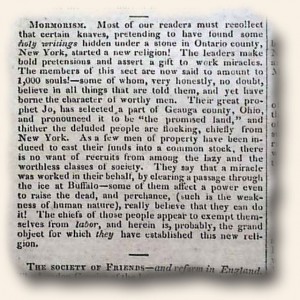 Early in its publication the battle of Tippecanoe brought the name William Henry Harrison to prominence with his victory over the Indians, the details of which made the pages of “Niles’ Weekly Register“. Then all the event of the War of 1812, from President Monroe’s war proclamation to the war-ending Battle of New Orleans led by Andrew Jackson (actually fought after the treaty ending the war was signed) with the host of naval battles of 1812-1815.
Early in its publication the battle of Tippecanoe brought the name William Henry Harrison to prominence with his victory over the Indians, the details of which made the pages of “Niles’ Weekly Register“. Then all the event of the War of 1812, from President Monroe’s war proclamation to the war-ending Battle of New Orleans led by Andrew Jackson (actually fought after the treaty ending the war was signed) with the host of naval battles of 1812-1815.
There is hardly a topic or event from American history not found in Niles’ Weekly Register. Much Judaica content, the creation of the Mormon Church and their journey west, much on the historic Maryland Jew Bill, and even mention of Abraham Lincoln and Robert E. Lee long before they would be names known to the American public were found in this newspaper.
The slavery issue was certainly not side-stepped, as reports on Nat Turner’s Rebellion and the Denmark Vesey case were two of the more notably events which received much coverage. The Amistad affair–not found in every newspaper of the day–was reported in many issues of Niles’ as the events & trial unfolded. Certainly the issue is slavery was ever-present in congressional reports, and was a factor in the Missouri Compromise, also published in this newspaper.
As the country continued to expand, the westward march was documented in many reports including the development & opening of the Erie Canal, the exploring of the Yellowstone region, and the creation of the Santa Fe Trail being just a few. Several states joined the union during the years of Niles’ and as they did even the alterations to the United States flag were documented by the newspaper. Names such as Daniel Boone, infamous pirate Jean LaFitte, Samuel Morse, Daguerre and Eli Whitney are a few which were featured as their actions and inventions made news.
The Texas war for independence made the news in 1835 and 1836 and many of the notable battles were reported. There is even mention of Davy Crockett leaving Congress and heading to Texas to fight for their cause, where he would meet his end at the famous Battle of the Alamo.
With politics as a focus it is no surprise that elections and inaugurations were all documents in “Niles’ Weekly Register“, including the short term of President William Henry Harrison who just one month after being inaugurated would die in office.
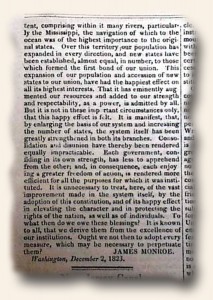 There is so much more history to be found within the pages of Niles’. Our troubling (and often disgraceful) relationship with the Native American Indians, including the Black Hawk War & Trail of Tears, was covered in much detail. The Mexican War and all its events was the last of the military encounters to appear in this newspaper, the treaty ending that war being signed in 1848, just one year before the demise of the newspaper.
There is so much more history to be found within the pages of Niles’. Our troubling (and often disgraceful) relationship with the Native American Indians, including the Black Hawk War & Trail of Tears, was covered in much detail. The Mexican War and all its events was the last of the military encounters to appear in this newspaper, the treaty ending that war being signed in 1848, just one year before the demise of the newspaper.
The ironic same-day deaths of Presidents Thomas Jefferson and John Adams, and on the 50th anniversary of the Declaration of Independence, received much coverage; the Monroe Doctrine and the curious efforts of Mordecai Manuel Noah to create a Jewish settlement on an island in the Niagara River are just two of the fascinating events of American history documented. And it was not just American history that was reported, as world-wide events, as their significance would dictate, would make the pages of Niles’ as well, not the least of which was the historic battle of Waterloo which spelled the doom of Napoleon’s efforts in Europe.
It was a pint-sized newspaper with a powerful impact upon the documentation of American history in the first half of the 19th century. It is a title every collector should not overlook as they consider the best newspapers for reporting some of the major events in history. They all will be found in “Niles’ Weekly Register“.




